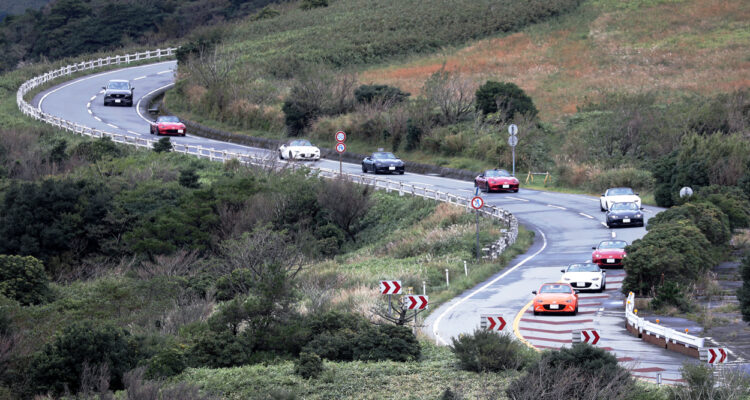It should come as no surprise that there are many takeaways from a trip to Japan, especially for first timers. The lights. The branding. The culture. The way manic city life blends in to serene zen-life seemingly in the blink of an eye, probably because you’re travelling at 200 miles-per-hour on a Shinkansen bullet train. The tiny kei cars, trucks and vans. The fact that it’s harder to find a traditional western Kit-Kat bar than it is to find one flavoured like wasabi, sake, or strawberry cheesecake.
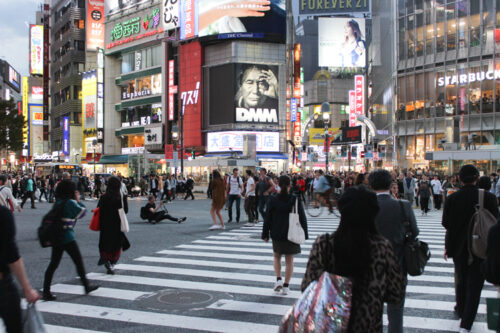
I could go on but the one thing I will always say about Japan is that while New York City may be the city that never sleeps, it’s hard to imagine the country of Japan ever sleeping, even though it seems that most shops don’t open until 10 AM on weekdays. It’s a go-go-go kind of place, but more than any other country I’ve ever visited, the trick becomes A) to make sense of it all and B) to find out how to slow it down from time to time, even when in the bustling metropolis of Tokyo.
Which is why the following is kind of a “Japan three ways” thing; three ways to get around the country that do a surprising job of mixing the speedy with the serene.
Take a walk
The first leg of our adventure has us in the capital city of Tokyo, a city of about 8.5 trillion people (actually, more like 13.5 million but it’s so dense that it may as well be in the trillions). More specifically, it has us in the Mandarin Oriental Hotel, a gorgeous establishment in the Nihonbashi business district.
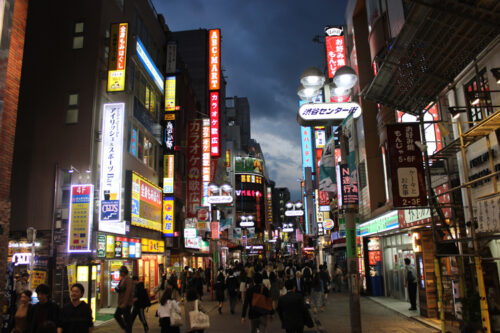
We start here not because of the gorgeous fittings or the rainfall shower that starts about three feet above your head, but because it offers a view of just how far-reaching Tokyo is. Yes; Manhattan is big, and Los Angeles’ urban sprawl is well-documented. Forget “urban sprawl” when looking out of the 30th storey at the Mandarin, though; it’s more like “skyscraper sprawl” as a look out there shows multiple buildings with multiple storeys stretching out multiple miles past the horizon. You simply cannot see the end of it and it’s almost mesmerizing.
So what to do, then, in this concrete jungle of concrete jungles? Well, head down to street level, of course!
It’s on the ground where everything comes to life, a life that shines that much brighter since it’s in the shadow of such behemoths.
If asked to use one word as a descriptor for the Tokyo street experience, it would be “neon”. Neon is everywhere. After all: if your storefront doesn’t have neon and the guys either side of you do, well, people are going to have a hard time seeing your place, aren’t they? So you’ve got neon atop neon and that extends well past the main drag.
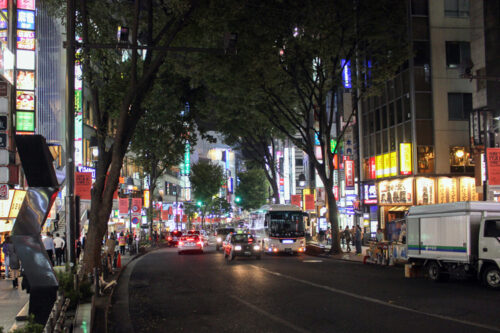
Take the Shibuya area, for example. We’ll get to the famous intersection in a moment but it’s essentially the Times Square of Tokyo, and that’s only the beginning. Yes; there are stacks of video screens on each corner – just like you’d see in Times Square – but it’s not like once you turn off there it’s all shadows. The storefronts, the restaurants — and yes, the neon — continues to the point where you had better watch yourself before you get lost in the maze of retail, light, bars and vending machines.
Vending machines? Oh yes. They are everywhere here, selling everything from Coke to hot tea in plastic bottles – go figure. You’d expect the ones in train stations and waiting rooms, but it’s when they start appearing in the middle of an open-air parkade or just along some random wall in an alleyway that you start to realize that you’re in the wrong business, and that you should be a vending contractor in Japan. You’d make a killing, to be sure. Maybe that’s what Cheryl Crow had in mind when she hitched that ride she wrote about in Every Day is a Winding Road…
You’d think, then, that with all this vending (and all these 7-Eleven locations – they’re more numerous in Tokyo than Tim Horton’s franchises are in Canadian towns) and all these storefronts, litter would be absolutely everywhere. But you’d be wrong. As manic as Tokyo is, it’s almost impeccably clean even though you’ll rarely spot a refuse bin outside of a private establishment. A lot of it comes down to cultural coding; It’s frowned upon to eat while walking through public, for example, so there’s a big percentage of garbage removed from the public sector.
Which makes sense as you prepare to cross Shibuya Crossing outside of Shibuya Station, which sees about 2,500 people cross every time a scramble crossing (vehicle traffic stopped in all directions) is activated. You don’t want to be making your way through here with your elbows out as you munch on a sandwich, that’s for sure. You wouldn’t make it past the midpoint.
Plus, with so much to see, you wouldn’t want to have your head down in a sandwich anyway. Much better to keep it up as you walk through Don Quijote, part of a chain of multi-storey stores that are one part dollar store, one part electronics giant and one part Trader Joe’s, all under one roof so that you can get lost in here just as easily as you can get lost in and around Shibuya station. Trust us, though; if you’re hard up for gifts as you near the end of your trip you’ll find something here, we guarantee it.
Thing is, big as that store is, it’s not one we would have found had we not just taken the time to stroll through the city. In Tokyo, just as in any small- or medium-sized town, it’s nice to not have a schedule, and just let whimsy whisk you forth.
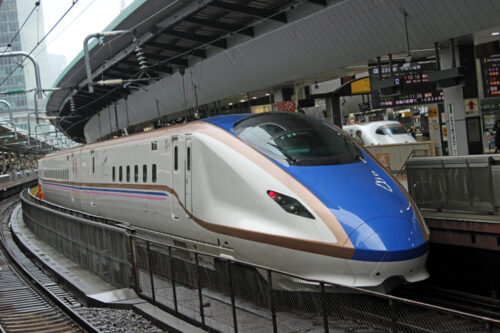
Take a train
That is, of course, until you decide to take a ride on one of those famous Shinkansen trains we spoke of earlier. Scheduling is king here.
You’ll likely know them better as “bullet trains”, but the term actually translates to “main line” as these are the trains that connect one end of this long island to the other. You’ll know them as “bullet” because of their speed and their shape, which is ultra-aerodynamic – like, space shuttle-levels of aerodynamic – like a bullet. They’ve got pointy noses at each end and usually sixteen cars in-between. They are divided into classes but most seats have electrical outlets and there is Wi-Fi on-board; these are frequented by Japanese business people, after all, many of whom take them every day to and from the office.
Which is good because more than likely, they’ll be on time. They’ll be on time because these trains are accurate – no hyperbole here – to the second. Legend has it that when one of the operators was one minute late – just one minute – they called the transit bureau…to apologize. This is punctuality at its finest and you should ignore it at your peril.
Which can be tough because the way to the platform in many of these stations – especially the main Tokyo Station where we set off from – is no easy task. Not because it’s hard to find your platform – they’re actually quite well marked and there are maps – but because of what you encounter on the way from the station’s main entrance to your platform.
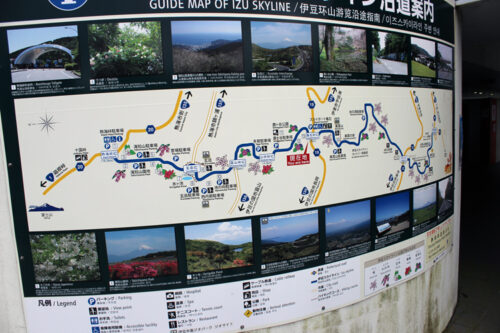
Remember how big a deal retail is? Well, Tokyo Station isn’t exempt as you may as well be walking through not a train station, but a mall. You’ll encounter stores for Nike shoes, those Kit Kats we talked about, a Garrett’s popcorn stand – yes, the very same Garrett’s popcorn you’ll find in its native Chicago – even a Tomica store, which makes diecast models of cars as common as Ferraris, to as eclectic as a Nissan Skyline police car or a flatbed truck with a giant hamburger load. It’s a shopper’s paradise here, and you can see why a train will be missed from time to time.
Eventually, you get to your platform and you’ll likely notice quite a large barrier between you and the track. The reasons for its existence are obvious, but it’s not until one of these behemoths run through here that you fully understand just why they’re so necessary.
You see, Shinkansen trains don’t tend to be of the milk-run variety – more stops means a slower ride as well as more potential for delays – so they come through some stations at 100 per cent top speed. They don’t slow down at all meaning you have a train, travelling at 285 km/h, ripping past where you’re standing about 10 feet away. The air being disturbed ‘round the train won’t quite bowl you over but you will feel it, and it’s a magnificent display of raw power that NASCAR wishes it could replicate.
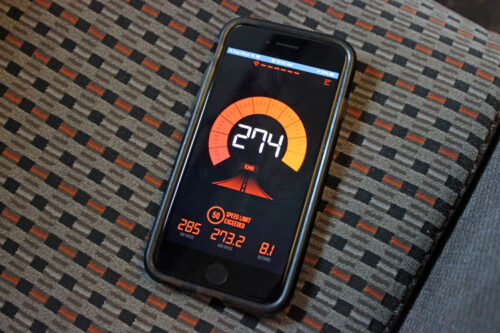
Once on, though, serenity is the order of the day. Seat comfort reaches airliner levels, you won’t hear the wind rushing past you, and the ride is so well-controlled you won’t feel the train roll to and from as it moves through turns. That being said: all the seats do face forward because rear-facing seats can mean more motion sickness. Attendants actually have to go through the train once it reaches the end of the line to spin each chair ‘round. This is a seamless operation and you can understand why the control centres look to be lifted from NORAD.
The hardest part, we found, was actually getting off the train. Unlike the seats, the time you have once at your destination is not airline-like and you have about three minutes to gather your things, get out of your seat and get off. There are no checks and balances here; if you don’t leave your seat, you’re off to the next station. Which, because you’re on a main line, is likely a whole other town away. It’s not like you can just get off and head in the other direction, either; you’re stranded until the next one, whenever that is.
For us, that stop was Atami station, about 100 km south of Tokyo and standing at the foot of a driving road any petrolhead would dream of: The Izu Skyline.
Take a drive
While the name “Skyline” undoubtedly conjures up images of certain all- or rear-wheel-driven Nissans tearing up the racetrack or drawing eyeballs at the local car meets, it’s actually a different Japanese legend we’ll be turning to for our drive on the Izu: the Mazda MX-5 Miata. With its near perfect weight distribution, rear-wheel-drive powertrain and six-speed manual gearbox, it is the car for work like this.
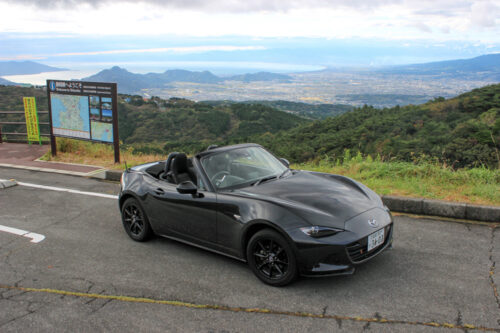
It’s also small, which is good if you’re not used to driving on the left-hand side of the road.
Allow me to explain.
You see, if you’ve driven for years on the right side, you develop a certain muscle memory and sense of perspective. Even if you drive many different cars, your intuition should kind of give you an idea of where to place your car in any given situation, whether it be when in your lane on the freeway, or when entering a tight alley.
That tends to go out of the window a little when you move to the other side of the car, and I found myself sticking very close to the centre line to ensure that I wasn’t wandering too far the other way.
Challenge number two, of course, is getting your left hand to do what you want it to when it comes time to change gears. Even though you’re sat on the other side of the vehicle, the pedals and shift pattern are aligned the same way you’re used to, but that wasn’t the problem.
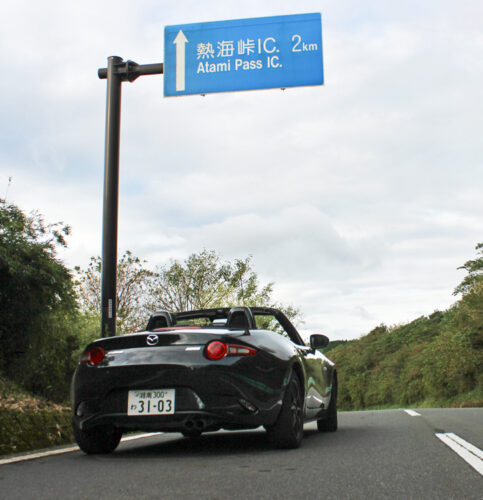
The real problem, as it turned out, was actually getting my right hand to do what I wanted it to because all of a sudden, it was the dominant hand when it came to steering. Only really an issue when shifting gears – which is something you should be doing before a turn anyway – it’s still one that led to a few hair-raising moments of quick correction.
Yes; ideally, you want to be done all your shifting and braking before you enter a turn, but this is no racetrack. This is a spiny stretch of tarmac that does kind of serve as a passage between cities but really seems to exist only to give people that love a good drive something to do. And maybe to raise a few Yen while it’s at it because it is a toll road. Standing in the shadow of Mount Fuji, it’s an ultra-bendy whippersnapper of a stretch that offers a little bit of everything; off camber work, long sweepers, tight hairpins and a straight or two for passing. Luckily for us, Japanese motorists are a polite bunch, indicating, slowing and moving off to the shoulder seemingly the minute they catch you in their mirrors.
As a result, we were allowed to pass back and forth over about 42 kilometres of this, just letting these marvels of modern motoring flow with the incredibly smooth tarmac below and through the scenery all around us.
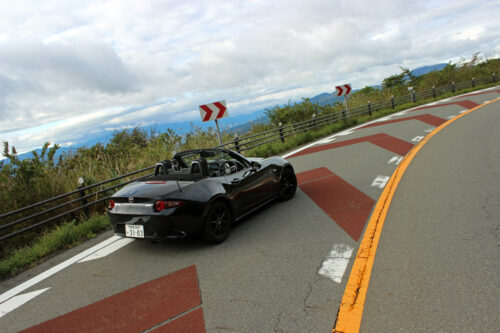
It really is the perfect car for this, the MX-5. The steering is direct, the transmission easy to slot and the naturally-aspirated four-banger while not that powerful, is responsive enough that there’s little delay between the time you tip in, to the time you reach that next turn entry.
It doesn’t take much of this to start to understand why the Japanese have developed cars as great as the MX-5 and Skyline GT-R. They use test tracks to be sure, but when you have roads that are as thrilling and well-kept as this and with respect being a major theme in Japanese culture, you had better build a car that does them justice.
Which is no small ask. I’ve driven many spectacular driving roads in my day but from The Tail of The Dragon in Tennessee, to the Angeles Crest in California, to the Côte d’Azur in France, I’ve never experienced something that looks so gnarly on the map, but is so manicured and well kept in reality. It’s glassy smooth but grippy even though it was a little damp, and it’s well-marked and signed and full of all those neat little things you’ve seen in video games set in Japan over the years; red paint that rises off the tarmac to caution you about a particularly dangerous turn, huge Japanese characters spanning many metres of tarmac ahead and more road signs than a construction site are the orders of the day, and they all serve to give the sense, like the neon in Tokyo or the quiet prowess of the Shinkansen, that you’re in a place that sometimes doesn’t feel entirely of this world.
Which, when you think about, is what travelling is all about.
Speaking of Mazda…
If you find the time, try snagging a Shinkansen to Hiroshima, the place where it all began when it comes to the MX-5. Mazdas are still built out of the factory there, and there’s a great little museum worth visiting if you’re a fan not just of Mazdas, but of automotive engineering history as well thanks to all the work and experimentation the firm’s done with rotary engines.
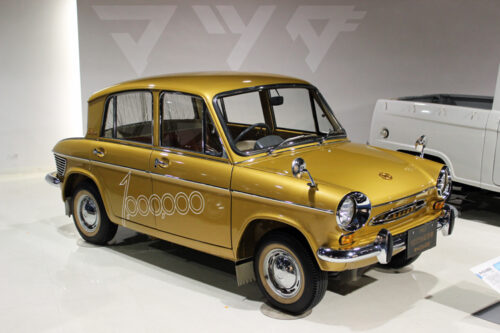
It also houses one of the most important Mazdas ever built: the 1,000,000th car to roll off the line, a 1963 Carol 600 microcar.
You see, more than just a number, this little Carol shows how this city, once devastated by the events at the end of World War II, continued to operate and how the Japanese public had rebounded enough for one of its many automakers – albeit one of its smallest automakers – to see the need to build 1,000,000 cars.
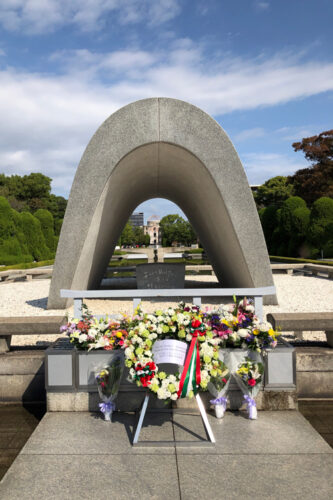
Today, the fantastic Hiroshima Peace Memorial Park sits just below the epicenter of the airborne atomic blast. It’s as moving as you’d expect, but the part that really got to me revolves around paper cranes that serve as a memory of Sadako Sasaki, one of the victims of the bombing. She was a young girl and while she survived the initial blast, she proceeded to develop leukemia a few years later. The story goes that during her time in hospital, she folded and delivered paper cranes – little origami birds – to others around her to help lift their spirits. As a result, she has gained a kind of legendary status when discussing the effects of the bombings on – and, more importantly, the subsequent recovery of — the Japanese people.
Today, paper cranes donated by visitors are stored in cases surrounding a memorial to her in the park. They do fill and when that time comes, the paper gets repurposed to craft memorial postcards and other recycled goods.
It’s a fantastic memory and as I stood and admired the monument, I pictured young Sadaki, driving somewhere in a little Gold Mazda Carol, bright pink cherry blossoms lining the road all the way to the horizon.



